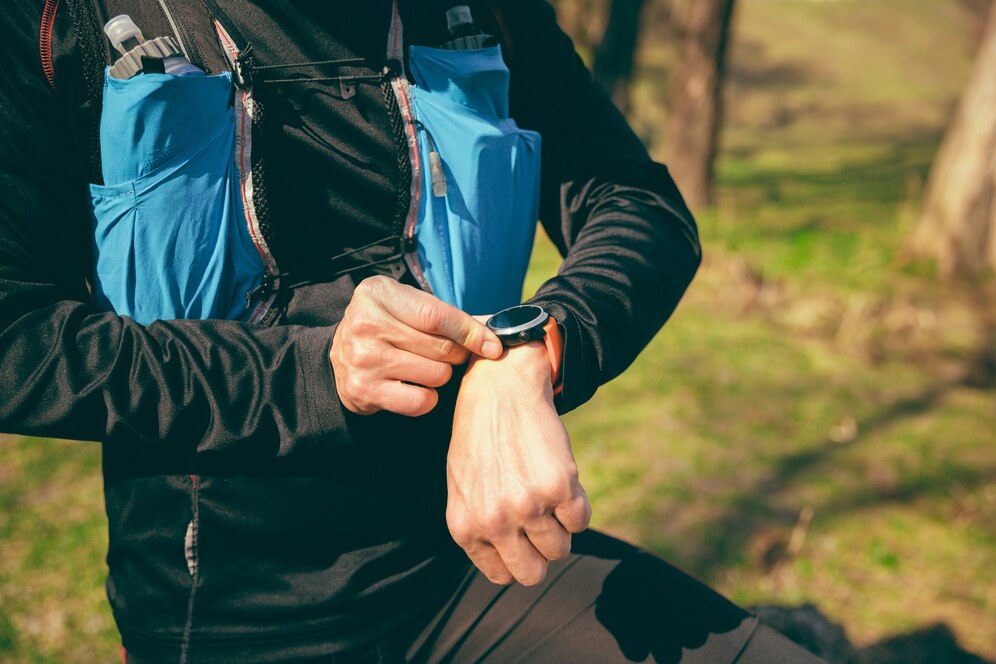
Trail running is more than just a sport—it’s an exhilarating way to connect with nature, challenge your body, and escape the monotony of urban life. Unlike road running, trail running demands a unique blend of endurance, agility, and preparedness, as the unpredictable terrain and weather can test even the most seasoned athletes. To thrive on the trails, having the right gear is non-negotiable. From specialized footwear to hydration systems and safety tools, the must-have gear for trail running ensures you’re ready for anything the wilderness throws your way. Whether you’re a beginner lacing up for your first off-road adventure or a veteran ultrarunner chasing a new personal record, this comprehensive guide dives deep into the essentials that will enhance your performance, comfort, and safety. Let’s explore the gear that can transform your trail running experience, backed by insights from top experts and trusted sources, so you can hit the ground running with confidence. The beauty of trail running lies in its raw, untamed essence—rugged paths, steep inclines, and breathtaking vistas—but it’s the right equipment that bridges the gap between ambition and achievement. According to Runner’s World, the proper gear can make or break your run, especially when navigating rocky singletracks or muddy slopes. Similarly, Trail Runner Magazine emphasizes that investing in quality tools tailored to the trails is a game-changer for both enjoyment and injury prevention. So, what exactly constitutes the must-have gear for trail running? Buckle up as we break it down piece by piece, weaving in practical tips, product recommendations, and a sprinkle of trail-running wisdom to keep you moving forward, no matter the conditions.
The Foundation: Trail Running Shoes
Your journey into trail running begins with the most critical piece of gear: trail running shoes. Unlike standard road running shoes, trail-specific footwear is engineered to tackle uneven surfaces, provide superior grip, and protect your feet from rocks, roots, and debris. A good pair of trail shoes features aggressive lugs for traction, a reinforced toe cap for durability, and a cushioned midsole to absorb impact on rugged terrain. Brands like Salomon, Hoka One One, and Altra dominate the market, each offering unique designs to suit different running styles and preferences. For instance, the Salomon Speedcross 6, praised by Outdoor Gear Lab, excels on muddy or loose trails thanks to its deep, chevron-shaped lugs, while the Hoka Carbon X 2, reviewed by Gear Junkie, blends lightweight cushioning with stability for long-distance efforts. Choosing the right shoe depends on factors like trail type (technical vs. smooth), weather conditions, and your foot’s anatomy—wide toe boxes from Altra, for example, cater to runners needing extra space. Don’t skimp here: a study from The American Journal of Sports Medicine highlights that improper footwear increases the risk of ankle sprains and blisters, common trail-running woes. Beyond fit, consider waterproof options like Gore-Tex models for wet climates, though breathability matters more in dry, hot regions—REI’s expert guide offers a handy breakdown of these trade-offs. Trying shoes in-store or on a short test run ensures they match your stride, as a snug heel and secure midfoot lockdown prevent slippage on descents. Pair your shoes with moisture-wicking socks—merino wool blends from Smartwool or Darn Tough, recommended by Backpacker, keep blisters at bay and add a layer of comfort. Your trail shoes are your first line of defense and propulsion, so prioritize quality and fit to conquer any path ahead.
Hydration Gear: Stay Fueled on the Move
Trail running often takes you far from civilization, where water fountains and convenience stores are distant dreams. That’s where hydration gear becomes a must-have for trail running, ensuring you stay energized and avoid dehydration’s debilitating effects. Options abound: handheld bottles, hydration vests, and waist belts, each with its pros and cons. Handheld bottles, like the Nathan SpeedDraw Plus, lauded by Runner’s World, are lightweight and simple, with ergonomic grips and small pockets for gels or keys—perfect for shorter runs. For longer hauls, hydration vests from brands like Ultimate Direction or Nathan, reviewed by iRunFar, offer larger capacities (1-2 liters) and distribute weight evenly across your torso, reducing strain. These vests often include soft flasks or reservoirs, plus storage for snacks, phones, and layers—essential for multi-hour adventures. A waist belt, such as the Amphipod Hydraform, suits minimalists who want hands-free convenience without bulk, though it holds less, per Trailspace. The choice hinges on distance and climate—experts at The North Face suggest 500ml of fluid per hour in moderate conditions, more in heat or high altitude. Electrolyte tablets like Nuun or SaltStick, available via Amazon, complement water to replenish salts lost through sweat, staving off cramps. Don’t overlook accessibility—practice drinking on the move during training, as fumbling with gear mid-run wastes time and energy. Hydration is non-negotiable; as Mayo Clinic notes, even mild dehydration impairs performance and cognition, risks amplified on remote trails. Pick a system that fits your body and run duration, and you’ll keep the spring in your step mile after mile.
Clothing: Dress for the Elements
Trail running exposes you to nature’s whims—sun, rain, wind, and temperature swings—so your clothing must adapt. The must-have gear for trail running includes moisture-wicking base layers, weather-resistant jackets, and versatile accessories to keep you comfortable and protected. Start with a breathable, quick-dry shirt—synthetic fabrics or merino wool from Patagonia or Icebreaker, endorsed by Outside Online, wick sweat and resist odor better than cotton, which soaks and chafes. Shorts or tights depend on preference and season; options like the Nike Trail Shorts, highlighted by Men’s Health, offer mobility and pockets, while compression tights from CW-X, per Women’s Running, support muscles on long runs. Layering is key: a lightweight windbreaker or waterproof jacket—like the Arc’teryx Norvan SL, raved about on Switchback Travel—shields against sudden storms yet packs small when skies clear. In cold climates, add a thermal mid-layer or fleece, advises Columbia. Accessories elevate your kit: a buff (multi-use headwear) from Buff USA, a cap for sun or rain from Headsweats, and gloves for chilly mornings. Sunglasses with UV protection, like those from Julbo, reviewed by Gear Patrol, guard your eyes from glare and branches. Dress in layers you can shed or stow, and check forecasts—Weather Underground is a trail runner’s friend. Quality apparel doesn’t just boost comfort; it prevents hypothermia or heatstroke, per CDC guidelines, making it a critical investment for safety and enjoyment.
Navigation and Safety Tools: Be Prepared
Trails can twist, fork, and vanish, turning a fun run into a survival test if you’re unprepared. Navigation and safety tools are must-have gear for trail running, especially on unfamiliar or remote routes. A GPS watch, like the Garmin Forerunner 945, celebrated by TechRadar, tracks mileage, elevation, and location with preloaded maps—vital for staying on course. For redundancy, a lightweight compass or a phone app like Gaia GPS, recommended by Wired, works offline when signals fade. Safety extends beyond navigation: a whistle (often built into packs), a compact first-aid kit from Adventure Medical Kits, and a headlamp like the Black Diamond Spot, praised by CleverHiker, are essentials for emergencies or dusk runs. Carry a space blanket—REI stocks ultra-light options—for unexpected delays or injuries. Share your route with someone, and consider a satellite communicator like the Garmin inReach Mini, per Outdoor Life, for areas without cell service. Trail running’s allure is its wildness, but as National Park Service warns, preparation mitigates risks like getting lost or injured. These tools weigh little but deliver peace of mind, letting you focus on the run, not the what-ifs.
Nutrition and Energy: Fuel for the Long Haul
Running trails burns serious calories—up to 600 per hour, per Harvard Health—so nutrition gear is a must-have for trail running beyond an hour. Energy gels (GU or Clif), chews (Honey Stinger), and bars (RXBAR), available at DICK’S Sporting Goods, provide quick carbs and electrolytes; stash them in your vest or shorts. For ultras, real food like nut butter packets or dried fruit, suggested by Ultra Running Magazine, sustains longer efforts. A collapsible silicone cup, like the HydraPak SpeedCup, cuts waste at aid stations or streams (with a filter like the Sawyer Mini, per Section Hiker). Timing matters—eat 100-200 calories every 45 minutes, advises TrainingPeaks—and test options in training to avoid GI distress. Fuel keeps your engine roaring when glycogen dips, ensuring you finish strong rather than bonking miles from home.
Comparison Table: Top Trail Running Shoes at a Glance
| Shoe Model | Best For | Key Feature | Price Range | Source |
|---|---|---|---|---|
| Salomon Speedcross 6 | Muddy/Technical Trails | Aggressive Lugs | $130-$150 | Outdoor Gear Lab |
| Hoka Carbon X 2 | Long-Distance Comfort | Carbon Plate Cushioning | $180-$200 | Gear Junkie |
| Altra Lone Peak 6 | Wide Feet/Zero Drop | Roomy Toe Box | $140-$160 | REI |
Why This Matters
This table simplifies your shoe hunt, aligning features with needs—traction, comfort, or fit—saving you time and missteps.
High-Quality FAQs
What’s the most important gear for trail running?
Trail running shoes top the list, as they provide traction, protection, and stability on uneven terrain. Experts at Runner’s World agree they’re the foundation of a safe, enjoyable run.
How much water should I carry?
For runs over an hour, aim for 500ml per hour, per The North Face. Adjust for heat or effort—hydration vests or handhelds make it manageable.
Are road running shoes okay for trails?
Not ideal. Road shoes lack the grip and durability trails demand, increasing slip and injury risks, per Trail Runner Magazine.
What’s the best clothing for cold trails?
Layer up: a moisture-wicking base, insulating mid-layer, and windproof jacket. Columbia suggests merino wool and fleece for warmth without bulk.
Do I need a GPS watch?
For remote or new trails, yes—it tracks location and stats. TechRadar rates Garmin models highly for reliability.
Conclusion: Gear Up and Hit the Trails
Trail running is a symphony of freedom, challenge, and connection with the outdoors, but its magic unfolds fully when you’re equipped with the must-have gear for trail running. From the grippy soles of trail shoes that hug rocky paths to hydration vests that keep you fueled through winding ascents, each piece plays a starring role in your adventure. Clothing that battles the elements, navigation tools that banish the fear of getting lost, and nutrition that powers your stride—these aren’t luxuries but essentials that elevate your experience from good to extraordinary. The investment goes beyond dollars; it’s about time saved from blisters, energy spared from dehydration, and confidence gained knowing you’re prepared. Brands like Salomon, Hoka, and Garmin, vetted by sources like Outdoor Gear Lab and iRunFar, offer battle-tested options, while tips from REI and Runner’s World refine your choices. Start small—shoes and a water bottle—or go all-in with a loaded vest and GPS; either way, tailor your kit to your trails, goals, and body. The trails don’t care about your pace or pedigree, but they reward readiness. So lace up, pack smart, and let the dirt paths lead you to vistas and victories you’ll never forget—because with the right gear, every run becomes a story worth telling.
